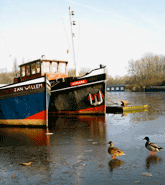The worldwide gas industry
>
Improvements in infrastructure
>
Japan
Japan
For much of 2008, Japan paid a high price on the spot market for the LNG it imported to replace the energy capacity it lost as a result of the earthquake of July 2007, which affected the largest nuclear plant in the world (8 GW).
Although Japan has plans to increase its nuclear capacity (at least maintaining and even possibly increasing its use in the electricity generation sector by up to 30%), the seven reactors at the Kashiwazaki-Kariwa complex will remain shut down until at least the middle of 2010. As a result, Japan’s important presence on the LNG spot markets will probably not diminish in any substantial way during 2009. As already mentioned, exports to Japan of Russian LNG from the Sakhalin-2 terminal have now begun. Russia is still planning to build a gas pipeline from the Sakhalin gas fields to southeast Asia, though it has not yet managed to obtain any firm undertakings.
As in 2007, Gazprom was very active in many different territories during the last twelve months, with the aim of gaining a greater foothold in places outside its traditional areas of influence and play a more important role in the latter phases of the gas supply chain. It has also entered into alliances with foreign companies in order to bring significant gas reserves to the market in the future. Particularly important was the agreement reached in October 2008 between Gazprom and the German company E.On, which will involve the exploitation of the Jushno Russkoje gas field in Siberia, one of the largest gas fields in the world with reserves of at least 700 bcm.

Annual Report 2.008: Sedigas - The Spanish Gas Association


